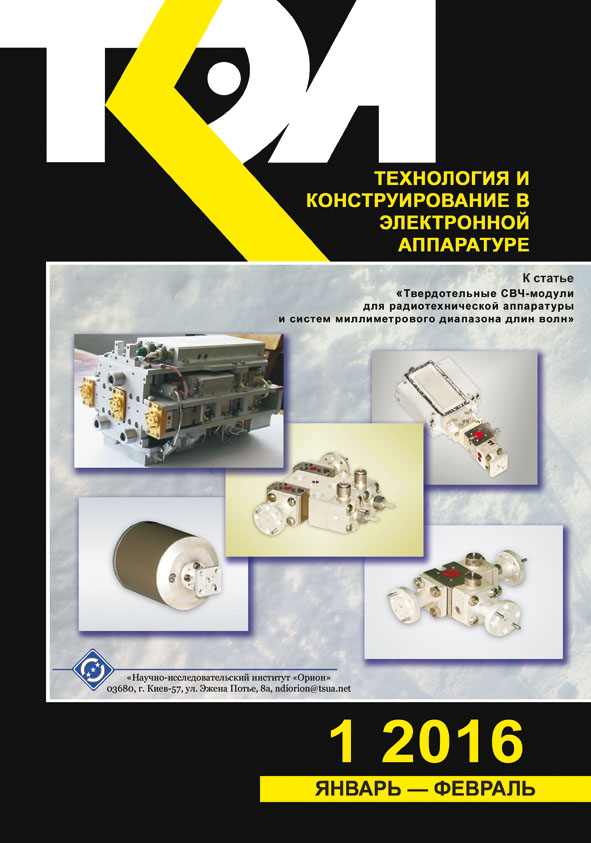Detector properties of Cd0,9Zn0,1Te:Al under the influence of low doze gamma irradiation
Abstract
Clarification of the influence of defects on detecting properties of CdZnTe detectors and understanding of the behavior of defects under the influence of aggressive radiation environment are very important to improve detector performance. The objective was to study the charges collection efficiency and the resistivity of Cd0,9Zn0,1Te:Al detectors operating under the influence of low dose gamma-radiation. The study was carried out by computer simulation, where initial data were provided by the experiment results of other researchers. The possible reason for the change of measured signatures of defect levels in high resistance Cd0,9Zn0,1Te:Al during gamma irradiation and 1 month later is the change in compensation degree of the material. The changes in the properties of Cd0,9Zn0,1Te:Al detector have been researched depending on the concentration and energy level of the deep donor for different concentrations of deep acceptors, as well as on the degree of alloying with aluminum. The negative factor for registering properties of Cd0,9Zn0,1Te:Al detector is increased concentration of zinc vacancies, which may arise at manufacturing stage and under influence of γ-irradiation during operation. The degradation of properties of irradiated detector may occur due to the offset dependence of the resistivity on the aluminum dopant concentration N(Al) towards to higher concentrations of Al when the value of doping is not enough large. Only resistivity will be reduced and charge collection efficiency may increase. The increase in resistivity of Cd0,9Zn0,1Te and charges collection efficiency of the detector occur when there is a sufficiently high level of doping the material with aluminum.
References
Kondrik A. I. [Charges collection efficiency in gamma-ray detectors with different electrodes configuration]. Tekhnologiya i Konstruirovanie v Elektronnoi Apparature, 2012, no 4, pp. 47-51. (Rus)
Kondrik A. I. Effect of irradiation on properties of CdTe detectors. East European Journal of Physics, 2014, vol. 1, no 1, pp. 47-52.
Kondrik A. I. Influence of radiation-induced defects on CdTe and CdZnTe detectors properties. Problems of Atomic Science and Technology, Series: Physics of Radiation Effect and Radiation Materials Science, 2015, vol. 96, no 2, pp. 18-24.
Castaldini A., Cavalini A., Fraboni B. Deep levels in CdTe and CdZnTe. J. Appl. Phys., 1998, vol. 83, no 4, pp. 2121-2126.
Fraboni B., Pasquini L., Castaldini A., Cavallini A., Siffert P. X-ray irradiation effects on the trapping properties of Cd1–xZnxTe detectors. J. Appl. Phys., 2009, vol. 106, pp. 093713. http://dx.doi.org/10.1063/1.3253748
Hofmann D.M, Stadler W., Christmann P., Meyer B.K. Defects in CdTe and Cd1–xZnxTe. Nuclear Instruments and Methods in Physics Research. Section A: Accelerators, Spectrometers, Detectors and Associated Equipment, 1996, vol. 380, no 1-2, pp. 117-120.
Pavlović M., Desnica U. V., Gladić J. Complete set of deep traps in semi-insulating GaAs. J. Appl. Phys., 2000, vol. 88, no 8, pp. 4563. http://dx.doi.org/10.1063/1.1308072
Pavlović M., Jakšić M., Zorc H., Medunić Z. Identification of deep trap levels from thermally stimulated current spectra of semi-insulating CdZnTe detector material. J. Appl. Phys., 2008, vol. 104, no 2, pp. 023525. http://dx.doi.org/10.1063/1.2959354
Ruihua Nan, Wanqi Jie, Gangqiang Zha, Bei Wang, Yadong Xu, Hui Yu. Irradiation-induced defects in Cd0.9Zn0.1Te:Al. Journal of Electronic Materials, 2012, vol. 41, no 11, pp. 2044-2049. http://dx.doi.org/10.1007/s11664-012-2204-5
Akutagawa W., Zanio K. Gamma response of semiinsulating material in the presence of trapping and detrapping. J. Appl. Phys., 1969, vol. 40, no. 9, pp. 3838-3854. http://dx.doi.org/10.1063/1.1658281
Sadullaev A.B. [Status of impurity atoms with deep levels in semiconductors in a strong compensation]. Molodoy uchonyj, 2011, vol. 1, no. 12, pp. 48-50. (Rus)
Cavallini A., Fraboni B., Dusi W., Zanarini M., Siffert P. Deep levels and compensation in γ-irradiated CdZnTe. Appl. Phys. Lett., 2000, vol. 77, no 20, pp. 3212-3214. http://dx.doi.org/10.1063/1.1324980
Copyright (c) 2016 A. I. Kondrik

This work is licensed under a Creative Commons Attribution 4.0 International License.

